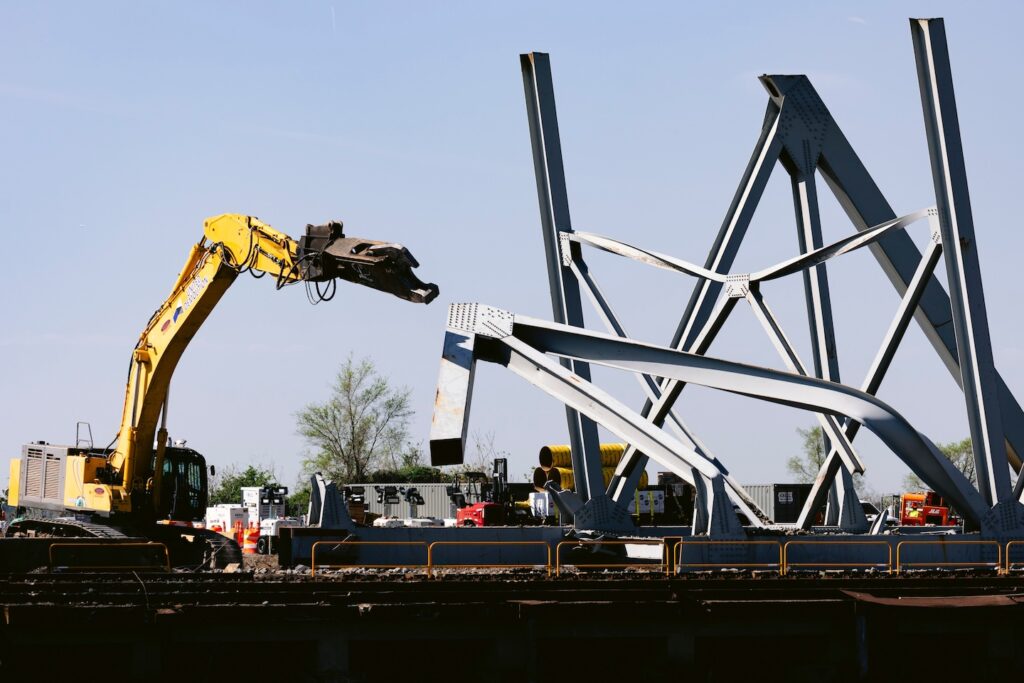It was the first time the workers had lifted such a large piece. The creeping journey from river to scrapyard illustrates the monumental task of dismantling a gigantic bridge that took years to build in just a few weeks.
Hundreds of engineers, workers and divers rushed to the scene of what some say may have been the costliest accident in maritime history, with six people estimated dead. Authorities recovered four bodies.
Huge pieces of steel and concrete that flowed into the river crippled the Port of Baltimore, spreading economic pain locally and nationally. Gov. Wes Moore (D) has promised to reopen the port by the end of May, and cleanup efforts are underway around the clock.
Sharon Russell, Key Bridge Joint Command's deputy incident commander, said crews are moving quickly and carefully, balancing the economic imperatives of reopening one of the nation's largest ports with the safety of salvage crews. said. She said no one was injured in the project.
“This is incredibly dangerous work,” Russell said. “This is a very complex project.”
Various officials and salvage experts have compared disaster recovery to the Deepwater Horizon oil spill in the Gulf of Mexico and the post-Hurricane Katrina cleanup in New Orleans. However, moving 450 tonnes of cargo was a major logistical challenge, even by the standards of an already difficult project.
Robin Bianchi, assistant salvage master for contractor Donjon Marine, said work begins before the first lift. Divers will examine the wreckage at a depth of 50 feet to understand its contours and where they will need to cut to salvage it.
Divers are guided by teams on the surface, as visibility is only 1 to 2 feet in the black, cold water. One official compared diving in Patapsco to driving with high beams on in a snowstorm.
“There's a lot of debris. There's a lot of rebar and concrete,” Bianchi said. “When diving for the first time, you often don't know what dangers are out there, so you need to be methodical and move slowly.”
Bianchi said the ever-present danger is getting caught in the umbilical cord, the line from the water that supplies air to the diver. Our emergency dive team is always on standby.
Teams on the ground used hydraulic scissors to cut the trusses large enough to be hoisted by cranes, and divers clamped the steel beneath the surface, said Sal Suarez, a U.S. Navy salvage and diving master. He also said that he is installing a diamond wire saw to cut the parts.
To handle the largest section of the bridge, officials brought in the Chesapeake 1000, one of the largest floating cranes on the East Coast. On Sunday, the section being used for the first time was slowly pulled out of the water.
The Chesapeake 1000 can lift up to 1,000 tons, but officials said large sections were lighter than expected because the roadbed came off the bridge and remained on the Patapsco's floor. Another section of the same truss remains in the river and is expected to be moved within the next few days.
Suarez said lifting the 450-tonne load was a moment of triumph amid tragedy.
“We're moving in the right direction,” Suarez said. “Everyone was excited about it.”
Chesapeake 1000 floated its dangling wreckage to Sparrows Point. Sparrows Point is an industrial district on Baltimore's waterfront that was home to the closed Bethlehem Steel plant that supplied steel in the 1970s. The bridge has gone around.
This huge section was about nine stories high, so workers cut it into two parts to make it easier to handle. On Monday, a cherry harvester worker used a propane torch to cut through part of the truss, creating a shower of orange sparks.
Then, a yumbo with crab-like claws tore through the bridge and pulled it out. At one point, part of the truss collapsed under the pull of the backhoe. Tons of twisted steel groaned and slammed into the ground, the sound echoing across Sparrows Point and kicking up clouds of dust.
Nearby, Yumbo scooped up part of the bridge's subgrade, creating a dangling pile of jagged pieces of rebar. The rubble has been crushed into pieces small enough to be removed by dump trucks. Officials said they are helping local businesses recycle as much as possible.
Officials are continuing to follow a schedule established in recent weeks to clear a temporary 35-foot-deep channel in the coming weeks to allow more ships into the Port of Baltimore. said. They hope to have the full channel open by the end of May.
The FBI has launched a criminal investigation into the disaster.
“There's a lot of pressure on us,” Bianchi said. “It's affecting our economy. We have to get this waterway open.”


